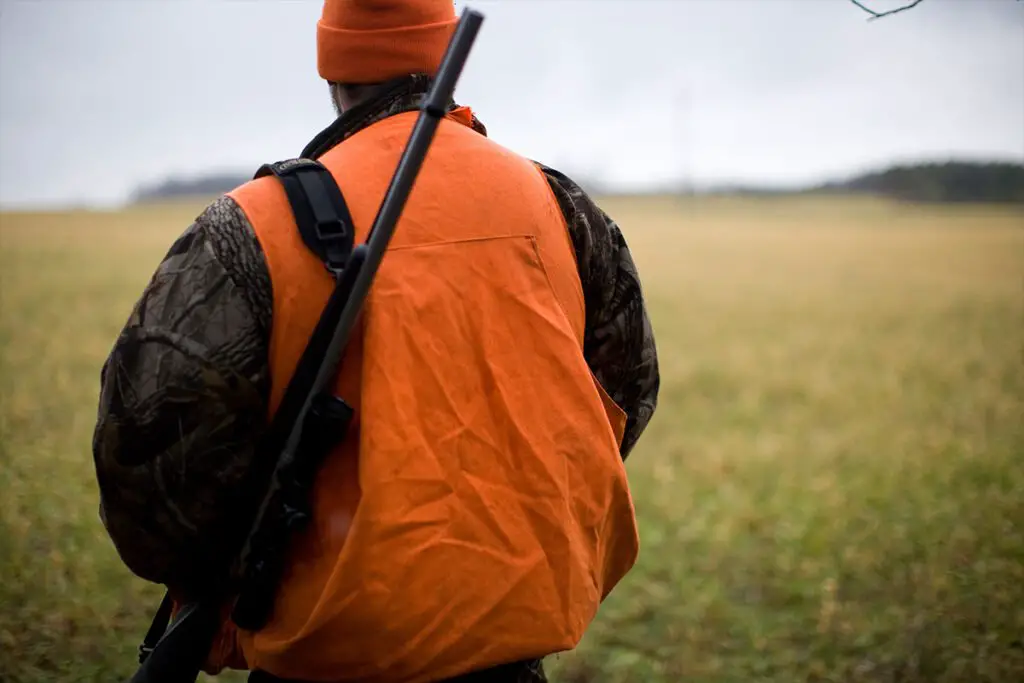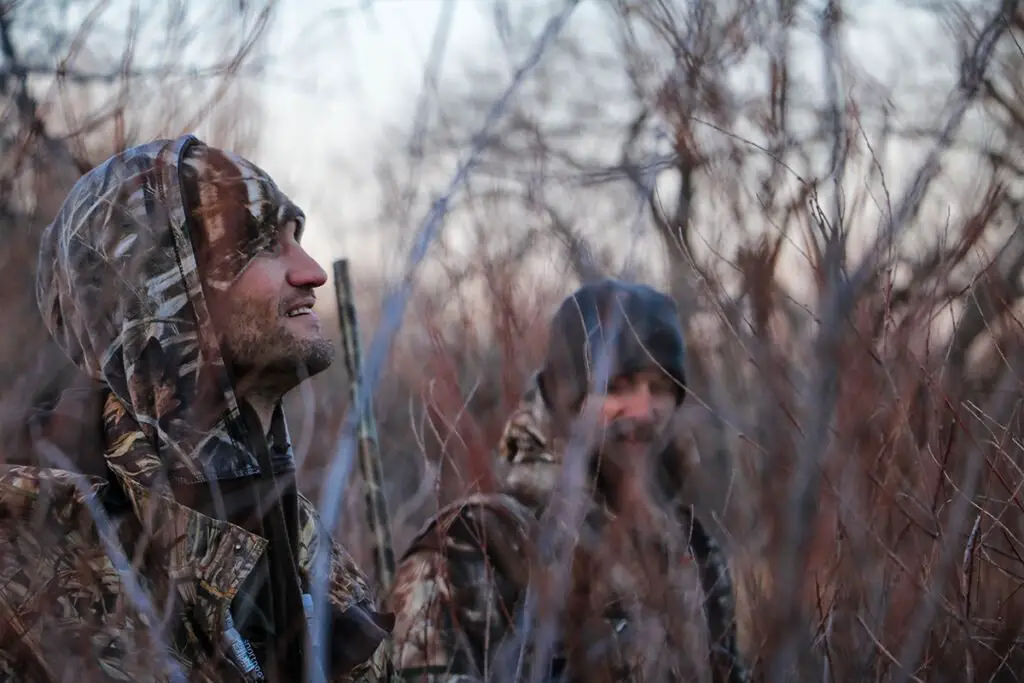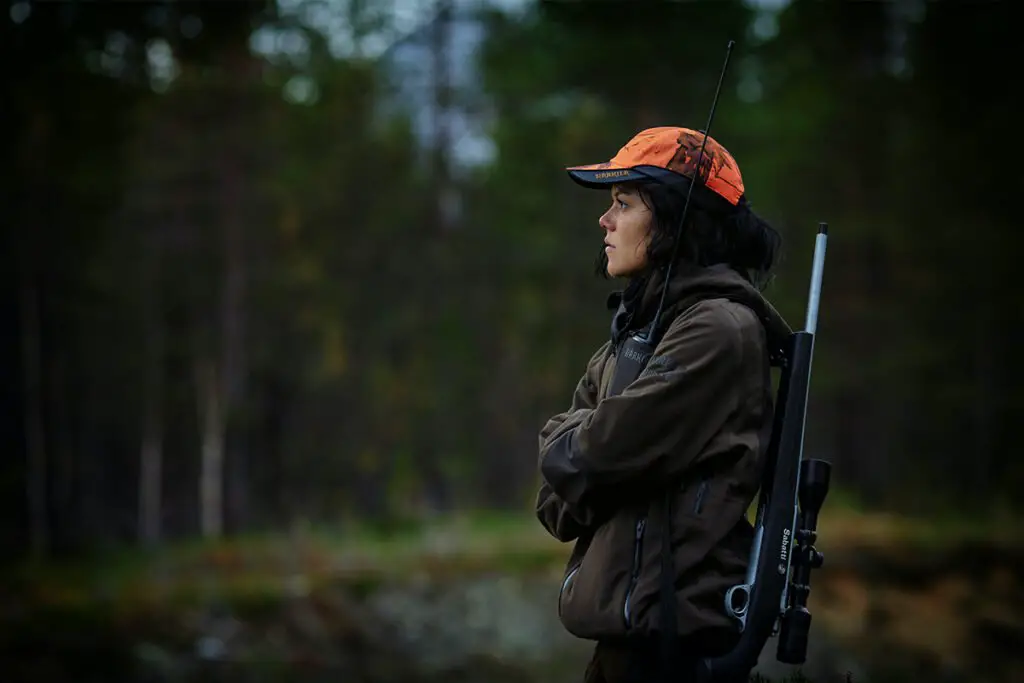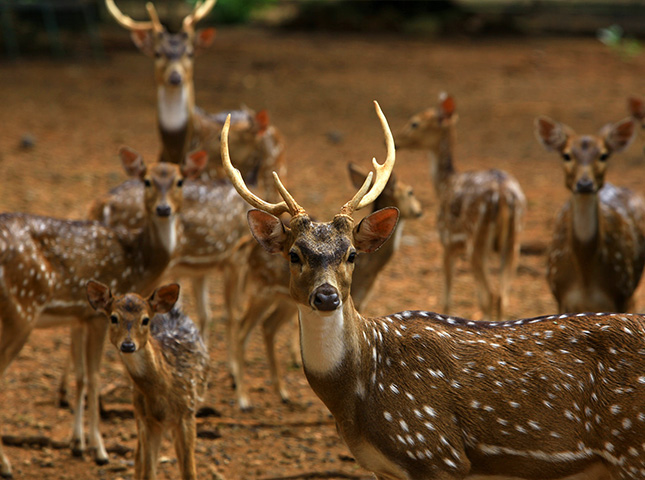Deer do not perceive the color orange in the same way humans do. Deer have dichromatic vision, meaning they primarily see in shades of blue and green. Their ability to distinguish between different colors is limited compared to humans.
While deer eyes may not perceive bright orange as vividly as human eyes do, it is still visible to them. Cones in people’s eyes allow them to see colors more intensely. This has important implications for hunters who wear orange vests or utilize orange legislation during whitetail deer hunting season.
Table of Contents
Key Takeaways
- Deer have dichromatic vision and primarily see in shades of blue and green, with limited ability to distinguish between different colors compared to humans.
- Reds appear less vibrant to deer, while blues and greens stand out more in their environment.
- Blaze orange may not stand out to deer as vividly as it does to humans, appearing as a shade of gray or brown to them.
Can Deer See Orange? Understanding Deer Vision and Color Perception
Deer possess a unique visual system that differs from human eyes. Their vision, which is classified as dichromatic, allows them to perceive colors differently than we do. This unique ability is particularly useful when they are navigating their environment, such as when they are outside.
However, it is important to note that their perception of colors may not be as vivid or accurate as ours. To understand how deer see the world around them, it’s important to delve into their eyesight and color perception.
Deer’s Sensitivity to Blue and Green Wavelengths
While humans have trichromatic vision, allowing us to see a wide range of colors, deer only have two types of color receptors in their eyes. This means they are more sensitive to blue and green wavelengths. These colors appear vibrant and stand out to them in their environment. So if you’re wearing something blue or green while out in the woods, a deer is more likely to notice you.
Reds Appear Less Vibrant to Deer
On the other hand, reds appear less vibrant to deer due to their limited color receptors. This doesn’t mean that deer can’t see the blaze of red at all; rather, it appears more muted or grayish to them. So if you’re relying on an orange vest for camouflage during hunting season, keep in mind that it might not be as effective as you think.
Understanding these differences in color perception is crucial when developing effective camouflage strategies for hunting or wildlife observation purposes.
The Importance of Camouflage Strategies
Knowing how deer perceive colors helps hunters blend into their surroundings better and increase their chances of success. Here are some key considerations when developing camouflage strategies:
- Color Choice: Opt for earth tones like browns and greens that closely match the natural environment.
- Pattern Breakup: Break up your silhouette by using patterns that mimic foliage or tree bark.
- Texture: Choose clothing with textures that resemble natural elements like leaves or branches.
- Scent Control: Remember that even if your camouflage is perfect visually, scent can still give away your presence.
By taking these factors into account, hunters can increase their chances of remaining undetected by deer.
The Visibility of Blaze Orange to Deer

Blaze orange, also known as fluorescent orange, is a highly visible color for humans. The question is, can deer see orange?
Their perception of this color is quite different. Due to the limited sensitivity of their eyes towards long-wavelength light, blaze orange may not stand out in their environment like it does for us.
Deer primarily rely on their keen sense of motion and acute hearing to detect potential threats. While they can see some colors, their ability to distinguish between them is not as sharp as ours. To them, blaze orange appears as a shade of gray or brown rather than the vibrant hue we perceive.
Limited Sensitivity towards Long-Wavelength Light
The visual system of deer is adapted for survival in their natural habitat. They have a higher concentration of rod cells in their retina compared to cone cells. Rod cells are responsible for detecting light and motion but are less effective at distinguishing colors.
Deer have evolved to be more sensitive to shorter wavelengths of light, such as blues and greens. These colors are more prominent in the natural landscape and provide better contrast against the background foliage. On the other hand, long-wavelength colors like orange may blend in with the surrounding environment.
Alternative Strategies for Hunters
While wearing blaze orange clothing is still recommended for hunting safety reasons, hunters should consider additional strategies besides relying solely on this color:
- Camouflage: Incorporate camouflage patterns into your hunting attire to help break up your silhouette and blend in with the surroundings.
- Scent Control: Deer have an exceptional sense of smell. Use scent control products and techniques to minimize human odor that could alert deer to your presence.
- Movement: Avoid sudden movements that could catch a deer’s attention. Move slowly and deliberately while maintaining good concealment.
- Tree Stands: Utilize tree stands or ground blinds strategically placed in areas where deer are likely to pass by. This can help you stay hidden and increase your chances of a successful hunt.
- Time of Day: Deer are most active during dawn and dusk, known as the “golden hours.” Plan your hunting activities accordingly to maximize your chances of encountering deer.
By implementing these alternative strategies, hunters can improve their chances of remaining undetected by deer and increase their likelihood of a successful hunt.
Camouflage Strategies for Hunters

Given deer’s unique visual perception, hunters and wildlife photographers often use specific camouflage strategies to minimize their visibility to deer.
1. Muted Earth Tones
Clothing and gear in earthy, muted tones like brown, green, and gray are less likely to catch a deer’s attention.
2. Break Up Patterns
Camouflage patterns that break up the outline of the human body can be highly effective in concealing the wearer from deer.
3. Minimal Orange Accents
Some hunters incorporate small patches of orange in their gear to meet safety requirements while still maintaining effective camouflage.
Impact of Deer’s Color Vision on Hunting
Hunting is a thrilling activity that requires careful planning and execution. One aspect that hunters often consider is the color of their clothing. The question arises: can deer see orange? Let’s explore the impact of deer’s color vision on hunting.
Bright clothing might not hide hunters from deer
While it is true that deer have limited color vision, they are not completely blind to bright colors like orange. However, it is important to note that simply wearing bright-colored clothing does not guarantee invisibility from these sharp-eyed creatures. Deer rely on various visual cues to detect potential threats in their surroundings.
Movement plays a significant role in catching the attention of deer. Even if you’re wearing orange, sudden movements can give away your presence. Therefore, it is crucial for hunters to remain as still as possible while hunting. The silhouette created by a hunter against the backdrop can also alert deer to their presence, regardless of the color they are wearing.
The Importance of Blending with Natural Surroundings in Camouflage Patterns

To increase their chances of remaining undetected by deer, hunters often opt for camouflage clothing. Camouflage patterns mimic the colors and textures found in nature, allowing hunters to blend seamlessly into their surroundings.
Camouflage works by breaking up the human outline and making it harder for deer to distinguish between background elements and the hunter themselves. This technique helps to disrupt the visual cues that would otherwise give away a hunter’s presence.
When selecting camouflage attire, it is important to consider factors such as terrain and vegetation prevalent in your hunting area. Different patterns may work better in different environments, so choose one that matches your specific hunting location.
Factors for Successful Hunting
While considering clothing color and camouflage patterns are important, they are not the only factors that determine hunting success. Other elements such as wind direction, noise control, and proper concealment also play crucial roles.
Deer have an exceptional sense of smell, so hunters must pay attention to wind direction when positioning themselves. By positioning yourself upwind from your target area, you can minimize the chances of deer detecting your scent.
Noise control is equally important. Even if you’re wearing the perfect camouflage and staying still, a simple noise like stepping on a dry leaf can startle deer and give away your position. Walk slowly and carefully to avoid unnecessary sounds that could spook your prey.
Lastly, proper concealment is key to successful hunting. This involves finding natural cover such as bushes or trees to break up your silhouette further and provide additional concealment. By blending into the environment and minimizing any visual or auditory cues, hunters can increase their chances of a successful hunt.
Expert Opinion on Deer’s Color Vision
Camouflage Patterns vs. Specific Colors
Experts in the field suggest thatUsing camouflage patterns that blend with the environment is more crucial than focusing solely on specific colors. The goal is to make yourself less visible and not stand out against the natural backdrop of trees, bushes, and grass. So, rather than obsessing over wearing a particular color like orange or green, hunters should prioritize blending into their surroundings.
Ultraviolet Light Reflection and Deer Perception
Some studies have indicated that ultraviolet (UV) light reflection from clothing might affect how deer perceive the presence of hunters. While humans cannot see UV light, it appears that deer can detect this spectrum. This means that even if your clothing seems inconspicuous to you, it may still be easily noticeable by deer due to UV reflection.
To avoid detection based on UV light reflection, some experts recommend using special hunting gear designed to minimize or eliminate UV visibility. These specialized garments are often treated with coatings or dyes that reduce UV reflectivity. By incorporating such gear into their hunting strategies, hunters can potentially increase their chances of remaining undetected by deer.
Holistic Approach to Hunting Strategies
Experts emphasize the importance of adopting a holistic approach rather than relying solely on color choices. Understanding the behavior and biology of deer is key in formulating effective strategies.
Deer have remarkable eyesight and possess certain anatomical features that contribute to their visual acuity. For instance, they have large eyes positioned on the sides of their head which provide them with a wide field of view but limited depth perception compared to humans.
Deer have a structure called tapetum lucidum located behind their retina. This reflective layer enhances their ability to see in low-light conditions by amplifying available light within their eye.
Taking these factors into account, successful hunting strategies should include elements such as scent control, proper use of blinds or tree stands, and maintaining stealthy movement. By approaching hunting from a holistic perspective, hunters can maximize their chances of outsmarting deer and increasing their chances of a successful hunt.
FAQs
Can wearing orange clothing scare away deer?
Wearing orange clothing alone is unlikely to scare away deer. While they may notice the color, it does not typically trigger fear or alarm in them.
What other factors should I consider besides color when hunting?
Besides color, factors such as scent control and movement play a significant role in hunting success. Deer have a keen sense of smell and are highly alert to any unusual scents in their environment.
Should I rely solely on camouflage patterns?
While camouflage patterns can help you blend with your surroundings, it’s essential to consider other elements like staying still and minimizing movement. Deer are sensitive to motion and can easily detect any sudden movements.
Does the time of day affect how well deer see colors?
The time of day can impact how well deer see colors. During low light conditions such as dawn or dusk, their ability to distinguish colors may be reduced compared to daylight hours.
Are there specific colors that attract or repel deer?
There isn’t strong evidence suggesting that specific colors attract or repel deer. However, it’s important to avoid wearing bright, unnatural colors that may draw unnecessary attention from deer.


